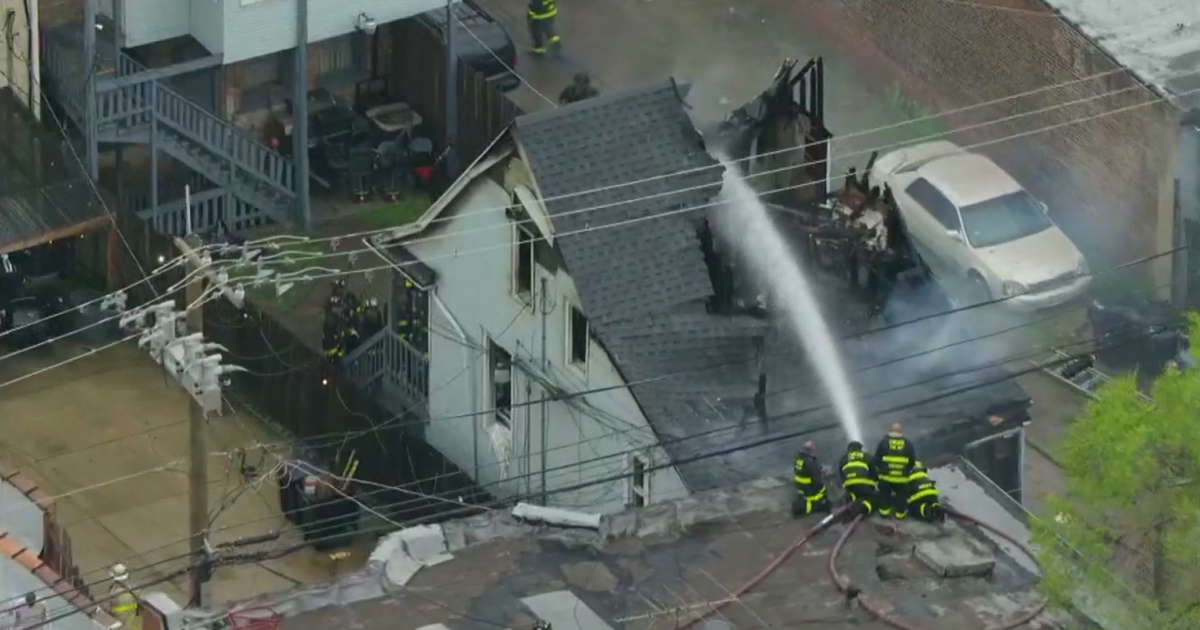Federal Climate Change Report Warns Of Increasing Harms
(CBS/AP) -- A new federal scientific report urged immediate action to protect the planet against the effects of climate change.
CBS 2 Meteorologist Mary Kay Kleist reports the findings in the National Climate Assessment released by the White House concluded U.S. temperatures have risen nearly 2 degrees since 1895, with most of that rise coming since 1970.
The report also showed carbon monoxide levels have risen quickly, and polar ice caps have shrunk significantly. The arctic ice cap typically acts as a reflector, sending heat from the sun back into space, but as the cap shrinks, the oceans absorb the heat like a sponge, and ultimately affecting the jet stream to the point extreme weather events – be it heat, cold, or storms – last longer.
The warming oceans also could feed a more severe hurricane season, as those storms feed on warm water.
Locally, the Chicago area has seen plenty of evidence of the changing climate in the past year alone, with a winter that saw the coldest average temperature on record for December-to-March, and the most days ever with the temperature at or below zero. It also was the third snowiest winter on record for Chicago, with 82 inches.
Barely a month before winter officially started, severe storms swept across Illinois, and powerful tornados devastated the towns of Washington and Diamond, leaving hundreds of homes severely damaged or destroyed.
Add storm surges in the Northeast to wildfires on the West Coast, and all the extreme weather last year got the attention of President Barack Obama, who called together top scientists and experts to help fulfill his promise to respond to the threat of climate change.
"This assessment is about presenting actionable science. We expect it will contain a huge amount of practical usable knowledge that state and local decision-makers can take advantage of, as they plan for the impacts of climate change and work to make their communities more resilient," White House counselor John Podesta said.
When surveying the Midwest, experts said agricultural land, forests, the Great Lakes, and cities are all vulnerable to climate variability and climate change. Longer growing seasons and rising carbon dioxide levels have helped farmers' yields, but also led to heat waves, droughts, and flooding.
The report also showed the average U.S. temperature is up and likely to continue to rise over time. Heat waves everywhere were projected to become more intense, according to the report.
Experts said the focus now should be on finding solutions, not just putting out warnings. More than 240 scientists from several federal agencies were part of the committee that contributed to the report, delegated by the Obama administration.
Climate change's assorted harms "are expected to become increasingly disruptive across the nation throughout this century and beyond," the National Climate Assessment concluded Tuesday. The report emphasizes how warming and its all-too-wild weather are changing daily lives, even using the phrase "climate disruption" as another way of saying global warming.
Still, it's not too late to prevent the worst of climate change, says the 840-page report, which the White House is highlighting as it tries to jump-start often stalled efforts to curb heat-trapping gases.
However, if the nation and the world don't change the way they use energy, "we're still on the pathway to more damage and danger of the type that are described in great detail in the rest of this report," said study co-author Henry Jacoby, co-director of the Joint Program on the Science and Policy of Global Change at the Massachusetts Institute of Technology. Jacoby, other scientists and White House officials said this is the most detailed and U.S.-focused scientific report on global warming.
"Climate change, once considered an issue for a distant future, has moved firmly into the present," the report says. "Corn producers in Iowa, oyster growers in Washington state and maple syrup producers in Vermont are all observing climate-related changes that are outside of recent experience."
The report looks at regional and state-level effects of global warming, compared with recent reports from the United Nations that lumped all of North America together. A draft of the report was released in January 2013, but this version has been reviewed by more scientists, the National Academy of Science and 13 government agencies and had public comment. It is written in a bit more simple language so people could realize "that there's a new source of risk in their lives," said study lead author Gary Yohe of Wesleyan University in Connecticut.
Even though the nation's average temperature has risen by as much as 1.9 degrees since record keeping began in 1895, it's in the big, wild weather where the average person feels climate change the most, said co-author Katharine Hayhoe, a Texas Tech University climate scientist. Extreme weather like droughts, storms and heat waves hit us in the pocketbooks and can be seen by our own eyes, she said.
And it's happening a lot more often lately.
The report says the intensity, frequency and duration of the strongest Atlantic hurricanes have increased since the early 1980s, but it is still uncertain how much of that is from man-made warming. Winter storms have increased in frequency and intensity and shifted northward since the 1950s, it says. Also, heavy downpours are increasing -- by 71 percent in the Northeast. Heat waves, such as those in Texas in 2011 and the Midwest in 2012, are projected to intensify nationwide. Droughts in the Southwest are expected to get stronger. Sea level has risen 8 inches since 1880 and is projected to rise between 1 foot and 4 feet by 2100.
Since January 2010, 43 of the lower 48 states have set at least one monthly record for heat, such as California having its warmest January on record this year. In the past 51 months, states have set 80 monthly records for heat, 33 records for being too wet, 12 for lack of rain and just three for cold, according to an Associated Press analysis of federal weather records.
"We're being hit hard," Hayhoe said, comparing America to a boxer. "We're holding steady, and we're getting hit in the jaw. We're starting to recover from one punch, and another punch comes."
The report also says "climate change threatens human health and well-being in many ways." Those include smoke-filled air from more wildfires, smoggy air from pollution, more diseases from tainted food, water, mosquitoes and ticks. And then there's more pollen because of warming weather and the effects of carbon dioxide on plants. Ragweed pollen season has lengthened by 24 days in the Minnesota-North Dakota region between 1995 and 2011, the report says. In other parts of the Midwest, the pollen season has gotten longer by anywhere from 11 days to 20 days.
And all this will come with a hefty cost, the report says.
Flooding alone may cost $325 billion by the year 2100 in one of the worst-case scenarios, with $130 billion of that in Florida, the report says. Already the droughts and heat waves of 2011 and 2012 added about $10 billion to farm costs, the report says. Billion-dollar weather disasters have hit everywhere across the nation, but have hit Texas, Oklahoma and the Southeast most often, the report says.
Joseph Bast, the president of the Heartland Institute, a conservative organization often critical of the Obama administration, dismissed the findings in the report.
"I think they're trying to whip up public support for a political agenda," said Bast. "He's attempting to shut down coal generation in the United States and in its place heavily subsidizing wind and solar energy and biofuels."
(TM and © Copyright 2014 CBS Radio Inc. and its relevant subsidiaries. CBS Radio and EYE Logo TM and Copyright 2014 CBS Broadcasting Inc. Used under license. All Rights Reserved. This material may not be published, broadcast, rewritten or redistributed. The Associated Press contributed to this report.)



